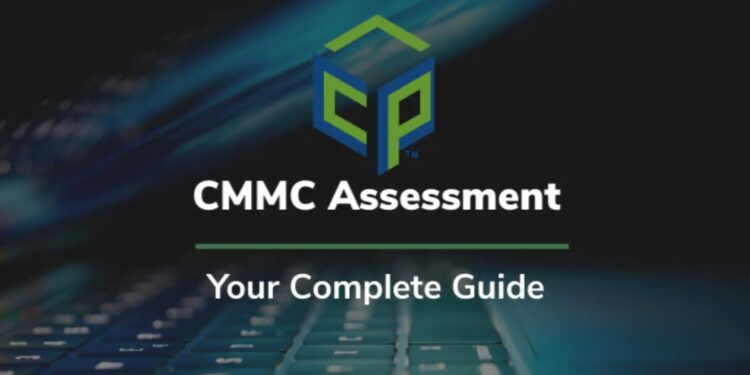Some defense contractors find the CMMC process too technical. Others feel lost in the maze of cybersecurity controls. But here’s the twist—understanding the Assessment Guide through a strategic DoD lens turns the challenge into a methodical path forward.
CMMC DoD Contextualization Through Assessment Guide Criteria
The CMMC assessment guide isn’t just a checklist—it’s a language spoken fluently by the Department of Defense. The guide is designed to make expectations explicit for contractors operating in the Defense Industrial Base (DIB). Each control outlined in the CMMC Level 2 Certification Assessment reflects the kind of cybersecurity posture the DoD expects, based on real threats to national security. What’s often missed is how much the guide gives away: not just what to do, but why it matters in the context of broader federal cyber strategies. When understood this way, contractors can better map their systems to meet both compliance and operational resilience.
Defense contractors who fully embrace the guide’s structure can anticipate assessment outcomes with much higher accuracy. It breaks down each CMMC practice into clearly defined objectives. For instance, AC.L2-3.1.3 isn’t just a mandate—it reveals what the DoD considers a “sufficient boundary” in access control. The guide helps decode what will be tested and what’s expected, which gives companies time to align documentation, tech configurations, and personnel responsibilities. Instead of guessing, they’re working with a playbook that’s already written in DoD terms.
Thematic Prioritization Framework From the Assessment Guide
The CMMC assessment guide naturally clusters controls into thematic areas—identity management, situational awareness, risk response, and more. This isn’t by accident. The themes help contractors group their internal teams around similar goals, creating operational focus. Prioritizing actions this way reduces burnout during audits and avoids spreading resources too thin. It’s not about ticking off boxes—it’s about building operational maturity where it counts first.
For organizations seeking CMMC Level 2 Assessment, applying the thematic prioritization structure found in the guide can unlock better project timelines. Instead of reacting to 110 different requirements at once, they start seeing 14 families of intent. Want to pass the CMMC Certification Assessment faster? Prioritize controls that protect Controlled Unclassified Information (CUI) first. The guide is clear on this. In fact, failure to secure CUI can be a red flag, even if other controls look good on paper.
Baseline Control Catalog Derived From DoD-Centric Guide Provisions
A baseline control catalog, built directly from the CMMC assessment guide, becomes a powerful internal resource. Think of it as your internal version of the guide but aligned with your infrastructure. Each DoD requirement is mirrored with an internal policy, an implementation detail, and a testing method. This simplifies onboarding, cross-departmental collaboration, and compliance maintenance.
The beauty of baselining is that it supports multiple efforts at once: compliance, training, and even procurement. New tools can be evaluated against your CMMC-aligned baseline. If you’re undergoing a CMMC Level 2 Certification Assessment, that catalog acts like a map for both auditors and teams. It proves you’re not just compliant—you’re consistent. Contractors that build from the guide’s original structure, rather than patching controls ad hoc, avoid the last-minute scramble that slows down most assessments.
Evidence Collection Matrix Designed by the Assessment Guide
What counts as evidence? The CMMC assessment guide provides specific indicators for every practice—artifacts, interviews, tests. By organizing this into an internal Evidence Collection Matrix, contractors give themselves clarity and control. Auditors will want to see proof across methods. A screenshot alone isn’t enough. You need configuration outputs, documented policies, and proof of recurring activity.
Using the matrix method, teams preparing for a CMMC Level 2 Assessment reduce guesswork. They track each control and the type of evidence required in a shared dashboard, assigning owners and validation steps. This keeps assessments from becoming fire drills. The guide tells you exactly what auditors are trained to look for—it makes sense to mirror that process internally. It also keeps your documentation habits sharp, which is essential for long-term CMMC compliance.
Stakeholder Accountability Structures Anchored in Guide Requirements
The CMMC assessment guide doesn’t just address systems—it focuses heavily on roles and responsibilities. Every control assumes a human element: someone configuring, monitoring, approving, or validating. That’s why contractors must build an accountability structure tied directly to guide expectations. It’s not enough for IT to “own security”—business unit leaders must know their part in achieving the CMMC Certification Assessment outcomes.
Creating this structure means going beyond org charts. For example, incident response doesn’t just need a policy—it needs designated responders with authority, practice logs, and documented communication chains. The guide’s clarity on this helps organizations formalize duties and delegate effectively. With clear lines of responsibility, internal checks improve and readiness becomes sustainable. Accountability isn’t just for passing assessments—it’s foundational to the DoD’s trust.
Mock Assessment Simulations Informed by the Guide’s Benchmarks
Simulations make a difference—especially when they mimic the assessment process using the actual benchmarks in the CMMC assessment guide. These mock assessments give contractors an opportunity to think like a Certified CMMC Assessor (CCA). Questions are modeled after real interviews. Evidence reviews follow the same rigor. Gaps become obvious—before they’re reportable.
A high-fidelity mock assessment is more than just a practice run—it’s a diagnostic tool. Teams conducting internal audits based on the guide’s format are better prepared and more confident. For organizations pursuing CMMC Level 2 Certification Assessment, this strategy accelerates the timeline from “almost ready” to “audit-ready.” It also sharpens their understanding of how maturity is evaluated—not just what’s in place, but how well it works across teams, systems, and time.
Remediation Tracking Dashboard Based on Guide Metrics
Mistakes are normal—but untracked gaps lead to failure. A remediation tracking dashboard based on CMMC assessment guide metrics keeps everything visible. It shows what’s incomplete, what needs reassessment, and who owns each fix. The guide defines what success looks like, so dashboards should reflect that: pass/fail criteria, evidence completeness, control owners.
This kind of dashboard isn’t just a project management tool—it’s a maturity tool. Organizations that align dashboard metrics to the CMMC DoD expectations signal operational readiness before the assessment even begins. When assessors see a structured remediation history, it builds trust. It shows that security isn’t a checklist—it’s a process. That’s the real benchmark the DoD wants to see, especially in a CMMC Level 2 Assessment.
Do Read: Why Data Compression Techniques Are Key to Computing Efficiency



















